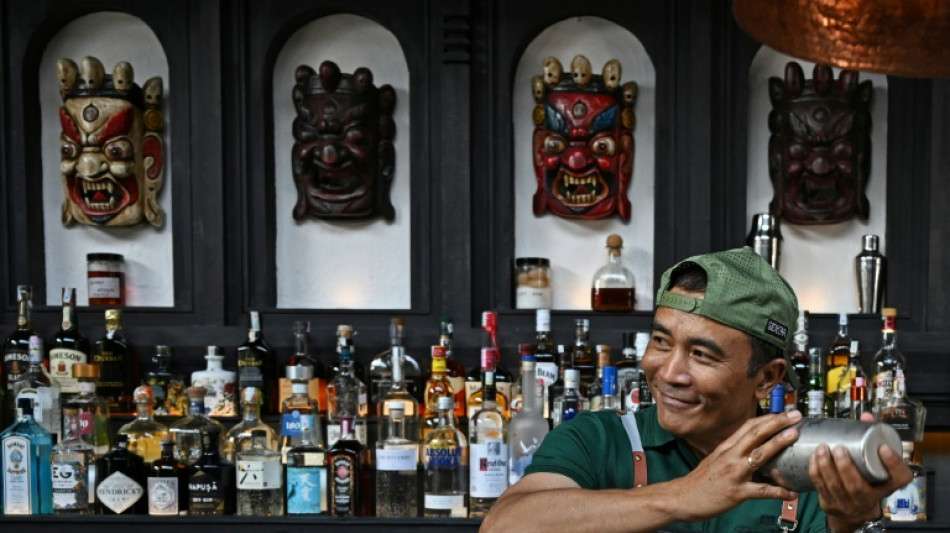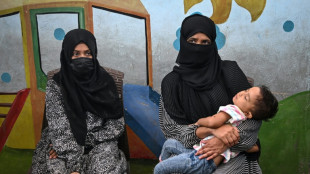

Raising the bar: Nepal's emerging cocktail culture
On a lively weekend, a bartender in Nepal's capital Kathmandu balances carefully a slice of titaura, a local tangy and spicy hog plum treat, on top of a martini glass.
The drink is an example of how a new wave of cocktail bars is combining age-old techniques with local traditions to craft uniquely Nepali drinks to make a global mark.
Until recently, cocktails were an afterthought on most bar menus in the capital of the Himalayan nation, often overshadowed by beers or straight spirits.
Concoctions available tended to be unbalanced, too strong or far too sweet.
But over the past five years, the city's cocktail scene has changed, led by a new generation of bartenders turning global experience into local innovation.
"It's definitely evolving at a very fast pace," Abhishek Tuladhar, who started his own bar after returning home to Kathmandu from a finance job in Singapore, told AFP.
"We're really thrilled, because we have a lot of ingredients and a lot of talent that we can definitely showcase to the world."
Tuladhar's Barc this year won the prestigious Asia's 50 Best Bars' Michter's Art Of Hospitality Award, a first for Nepal, and has climbed up their rankings to number 35.
The speakeasy Barc's menu champions tea from Ilam in western Nepal, childhood tangy street favourites like titaura and khattu -- dried fruit sweet snacks -- and local rice spirit aila, flavouring it with local spices.
"I think it is understanding that flavour and making it palatable to all markets," Tuladhar said. "It's not just a direct translation."
- 'Forced creativity' -
When Rabin Gurung returned from Hong Kong and decided to open a cocktail bar, he spent months trying to finding a simple key ingredient -- lemon.
"Classic cocktail recipes demand lemon, but I could only find lime in the markets," said Gurung, 37, co-founder of the bar Bitters & Co.
"We sent out people to look at all citrus grown here in Nepal until we found something."
Many imported ingredients and liqueurs can be hard to find -- or are very expensive.
US-returnee Santosh Faiia, 29, who runs the popular BlackBird bar and newly opened Layaa in the heart of Kathmandu's tourist hub Thamel, said that the struggle to find ingredients forced the industry to be "creative".
Bartenders now make several ingredients from scratch, including special bubble-less clear ice, house bitters, and syrups infused with local botanicals like rhododendron.
That approach is paying off.
With a growing curiosity among Nepali drinkers and tourists alike, bartenders now find themselves at the heart of a fast-evolving scene.
"I think that is what creates a great amount of excitement amongst consumers. And that is why I think the recognition has happened," said veteran Indian bartender Yangdup Lama, who has designed the cocktail menu of the newly opened Old House in Kathmandu.
"There's this 'wow' factor."
Both BlackBird and Bitters & Co have previously been listed in Asia's 50 Best Bars' extended list.
- 'Nepali hospitality' -
Growing interest in cocktails is driving new investments, creating more stable job opportunities for bartenders, particularly significant in a country where around 1,600 young people leave daily in search of work abroad.
"Things are gradually shifting, and bartending is starting to be seen as a viable career path so people can work here in Nepal and stay close to their families," said Faiia.
The drinks themselves are out of the price range of many ordinary people in Nepal, one of the poorest countries in Asia.
But several new bars have popped up in the last year that prominently feature cocktail recipes with home-grown names and ingredients.
Emma Sleight, head of content for Asia's 50 Best Bars, sees strong potential in Nepal's emerging bar scene.
"Anyone who has experienced Nepali hospitality knows it is full of sincerity and heart," she said.
"Combine that with Nepal's rich culture, its incredible ingredients, and the passion of its people, and you get something truly unique."
M.Paredes--ECdLR






